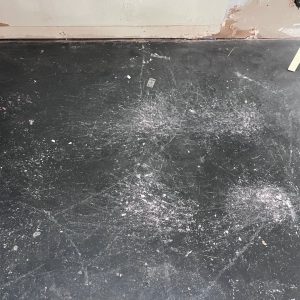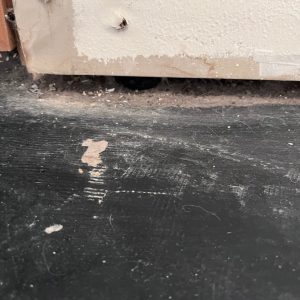Prep concrete without self leveling?
We have 1000’ sq ft loft- concrete slab on grade has multiple layers of paint and carpet adhesive. We live here with kids and grinding isn’t an option. The floor has fallen about 1” on one 20’ wall. The foundation has been stabilized with helical piers but can’t be lifted. We’d like to install engineered wood flooring. Sleepers would make floor too high, room has commercial steel doors in CMU and some swing inside. Can we apply t/g osb subfloor directly to the painted concrete and possible make super shims to level out the fallen portion. And what’s the best and economical fastener and schedule? Drive anchors, tapcon, ramset? Thanks in advance fyi this isn’t our forever home but also don’t want failure in 5 years.






















Replies
i'd consider self-leveling compound which is fortified with latex that can go to a feather edge. engineered floors service life would be less than 20 years. they aren't like 13/16 t&g oak strip which would last generations. if you are concerned about the longevity of a belt-and-suspenders repair to the subfloor, then you could start the floor at the other end so that if you do need to do repairs down the line, then you wouldn't be pulling the entire floor.
cutting the bottom of metal doors with a grinder or skilsaw/metal blade is about as fun as it sounds.
Thanks for the reply. The problem we have encountered with self leveling compound is the issue with grinding the layers of adhesive and paint off to properly adhere the compound to the slab. We have been told over and over it cannot go over painted concrete and we can’t grind due to the fact we live in the space and have kids with asthma. Plus the slab has fallen so much that calculations put the SLC at around $3000. Since we’re not going to live here forever, just looking for a clean, fast and cheap way to put in planks. I wish we could do the concrete correctly but can’t justify the cost and impacts to the house while it’s occupied.
Maybe someone has put in self leveling without grinding and knows of a great primer?
Thanks again
$3K is a lot of self-leveling patch material. drilling shallow holes at regular intervals into the substrate could bypass the issue with scarifying -- 3/4" deep holes at 2" OC could be drilled with a HEPA vaccuum setup inside a zipwall with positive pressure on the outside living area would create almost no dust.
even if you use wood, then you will still have some area that's unsupported - so either way, you'd need to solve the issue of transitioning from approximately 1/2" to zero. if you used a crack isolation membrane adhered to the existing surface, then you'd at least be able to use a thinset and know that the patch would be adhered to a substrate, even if the substrate floats.
just spit-balling, but if the existing surface is regular, then you could consider xps foam cut to a taper and adhered to the substrate. you'd want a giant hot wire to cut the material and it would be really time consuming to get to manufacturer flatness.
Unless there are big cracks and lumps in the slab and in the paint/carpet adhesive, consider just going over the slab as is. Not a satisfying solution, but probably workable and less noticeable than you might think. Be sure to use some sort of vapor barrier.
OTOH, in my one experience with grinding (diamond wheel/floor polisher rented from Home Depot), I found that while grinding wet is very messy, the mess all stays within an inch of floor level and a kid with a wet/dry vacuum can deal with that. Vacuum, rinse, repeat.
Concerning the expense of SLC, you don't have to make up all the difference with SLC. I once was asked to tile a "laundry room" that had apparently been poured (troweled?) against a hillside (maybe there was rock under the concrete?) There was literally a 9" high side to the non-functional center drain and 4" from the threshold to the drain. It took 4 sacks of mortar w/ latex to bring the level from the drain up close to the level of the threshold, then I filled and smoothed up to the threshold with a couple of sacks of SLC. As you point out, even that was spendy. And I proved that 12x12" floor tile will conform to a cupped surface if you cut it in small enough pieces.